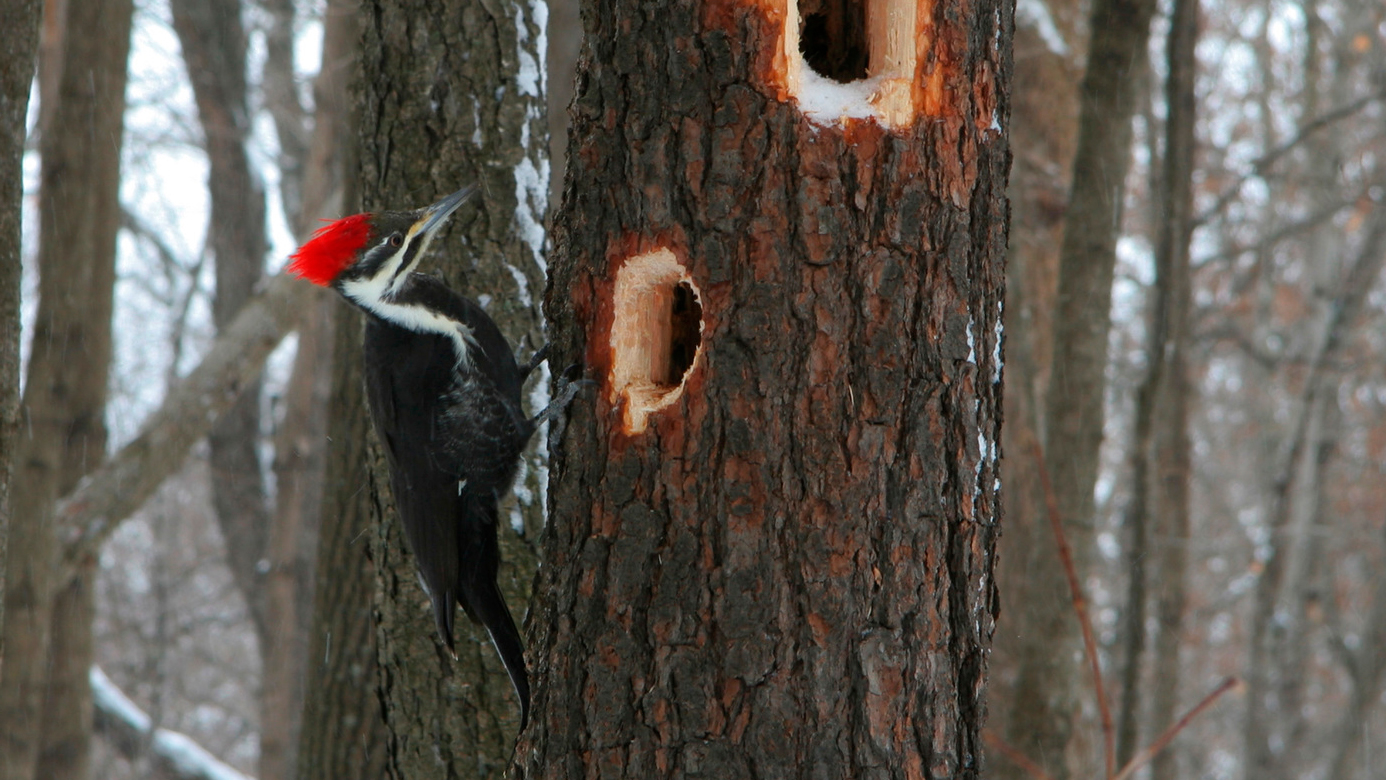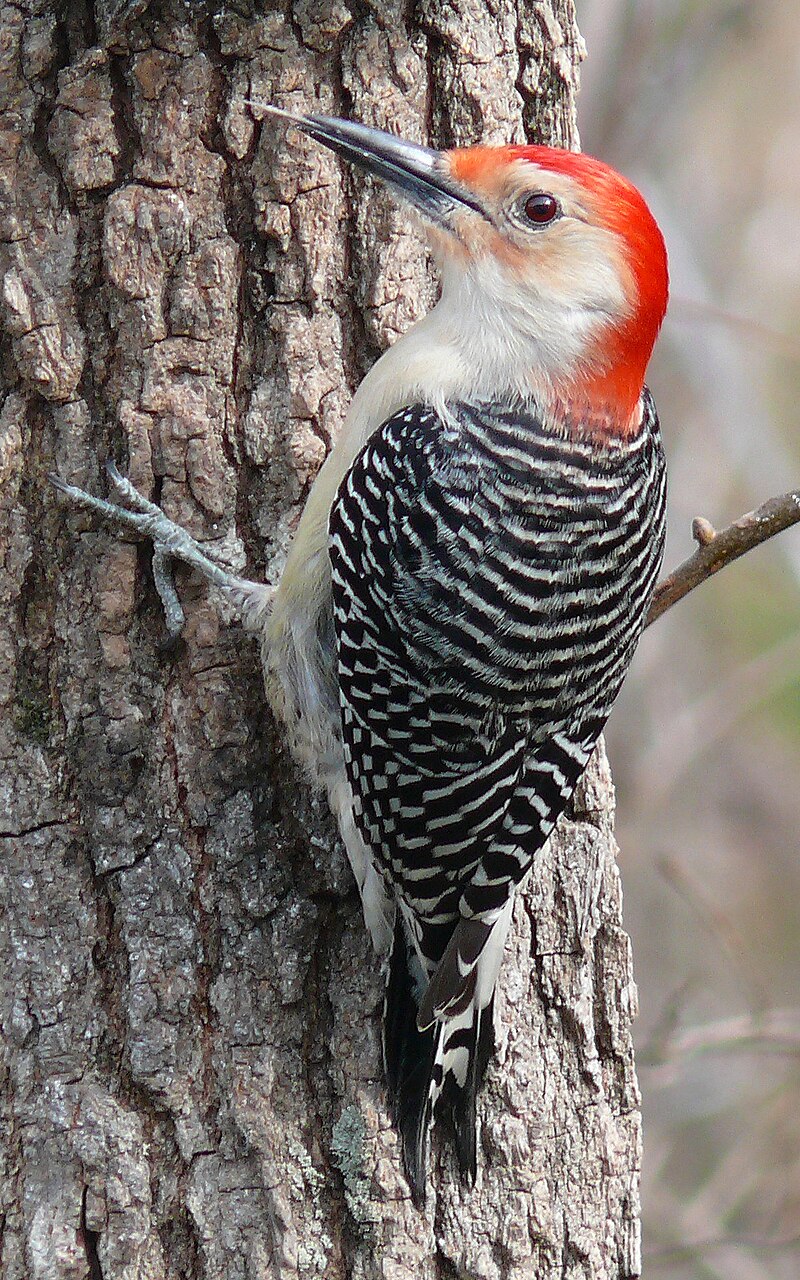Recognizing Woodpeckers in Florida: Habits, Types, and Habitats
Recognizing Woodpeckers in Florida: Habits, Types, and Habitats
Blog Article
Woodpeckers: A Comprehensive Overview to Recognizing These Special Birds
Woodpeckers, with their distinct habits and physical features, have long astounded the interest of ornithologists and nature fanatics alike. As we explore the complex anatomy, varied types, and ecological relevance of woodpeckers, a much deeper gratitude for these one-of-a-kind birds and the mysteries they hold unfolds.

Woodpeckers' Drumming Habits
Woodpeckers display a rhythmic and accurate drumming behavior that offers numerous necessary features in their every day lives. This behavior is mostly linked with communication, territory defense, and foraging. The distinct drumming sound is created by the rapid pecking of their beaks against hard surface areas such as tree trunks, branches, or perhaps steel things.
Interaction is a vital aspect of woodpecker actions, and drumming plays a substantial role in this procedure. Woodpeckers utilize drumming to establish their presence, bring in companions, and maintain call with their partners and spawn. The regularity, strength, and duration of drumming series communicate particular messages to various other woodpeckers in the location.
In addition to interaction, woodpeckers use drumming habits for territory protection. Woodpeckers in Florida. The loud and repeated drumming works as a cautioning to potential burglars, indicating that the location is currently claimed. By developing their territory with drumming, woodpeckers reduce the chance of disputes over beneficial resources such as food and nesting websites
Furthermore, woodpeckers also utilize drumming as a foraging technique. The rhythmic pecking aids them locate pests hiding underneath the bark of trees by developing resonances that interrupt the target's camouflage. This behavior showcases the versatility and ingenuity of woodpeckers in using their drumming skills for several important objectives.
Unique Adaptations for Tree Climbing
Having actually mastered the art of drumming to communicate, defend territory, and forage, woodpeckers have developed distinct adaptations that facilitate their amazing climbing abilities in their arboreal habitats. Woodpeckers have zygodactyl feet, with two toes aiming onward and 2 toes aiming in reverse. These tail plumes supply stability and balance, enabling woodpeckers to maneuver up tree trunks with accuracy and dexterity.
In addition, woodpeckers have effective neck muscle mass and a special skull structure that help in their climbing up capabilities. Their strong neck muscles permit them to swiftly eat tree bark without experiencing whiplash, while their thick skull and small mind function as shock absorbers, securing them from the effect of repeated drumming. These adaptations jointly allow woodpeckers to navigate the upright globe of trees with effectiveness and grace.

Function of Woodpeckers in Ecological Communities
By foraging for insects under the straight from the source bark of trees, woodpeckers help regulate pest populations, preventing outbreaks that can damage the total wellness of the woodland. Additionally, woodpeckers develop tooth cavities in trees that offer as critical nesting sites read here for a selection of various other bird species, promoting biodiversity within the ecosystem.
Additionally, the drumming and vocalizations of woodpeckers play an important function in communication and territory facility. These noises not only offer to bring in companions but also aid specify boundaries in between various woodpecker areas, decreasing conflicts and promoting an unified coexistence within the woodland area. Generally, the presence of woodpeckers in woodland environments highlights their significance as keystone species, affecting the dynamics and operating of these environments in multifaceted means.
Anatomy: Specialized Beaks and Feet
In the complex internet of forest ecological communities, the specialized beaks and feet of woodpeckers are important adjustments that allow them to accomplish their crucial environmental duties. Woodpeckers possess special physiological features that are particularly made to help them in their foraging and nesting actions.
The most unique attribute of woodpeckers is their solid, chisel-shaped beaks. These beaks are perfectly adjusted for exploration right into wood to discover bugs, larvae, and sap surprise below the bark of trees. The strong muscular tissues and tough structure of their beaks allow woodpeckers to peck at a price of approximately 20 times per secondly without creating damage to their skulls.
Additionally, woodpeckers have specialized feet that help in their acrobatic climbing up capacities. Their feet have 2 toes aiming forward and two toes pointing backward, providing a strong hold on vertical surface areas (Woodpeckers in Florida). This unique foot arrangement, along with rigid tail feathers that serve as a helpful prop, allows woodpeckers to cling to tree trunks and branches with simplicity while they look for food or excavate nesting tooth cavities
Woodpecker Types Diversity
Woodpeckers are a diverse team of birds located across various ecosystems worldwide, with over 200 well-known types exhibiting adjustments to different settings. Woodpeckers have actually developed to inhabit an array of atmospheres, from forests and forests to grasslands and deserts, each offering distinct challenges that have actually influenced the evolution of distinctive woodpecker types.
Another adding factor to woodpecker varieties diversity is their specialized feeding actions. Different varieties have progressed to manipulate numerous food sources, such as bugs, tree sap, fruits, and nuts, leading to the growth of certain adaptations in beak shape, dimension, and strength. These adjustments enable web woodpeckers to forage effectively in their respective habitats, reducing competition amongst types and advertising niche differentiation. In addition, geographic isolation and historic factors have actually played a function fit the distribution and variety of woodpecker species, causing the vast range of specialized adjustments seen in these remarkable birds.

Final Thought
In verdict, woodpeckers are remarkable birds that display unique drumming actions, specialized adaptations for tree climbing, and play important duties in communities. Their anatomy, consisting of specialized beaks and feet, allows them to grow in their atmosphere. With a diverse variety of woodpecker species located worldwide, these birds are vital for maintaining the health and wellness and balance of woodlands and woodlands. Comprehending and appreciating the ins and outs of woodpeckers can provide beneficial understandings right into the natural world.
Report this page